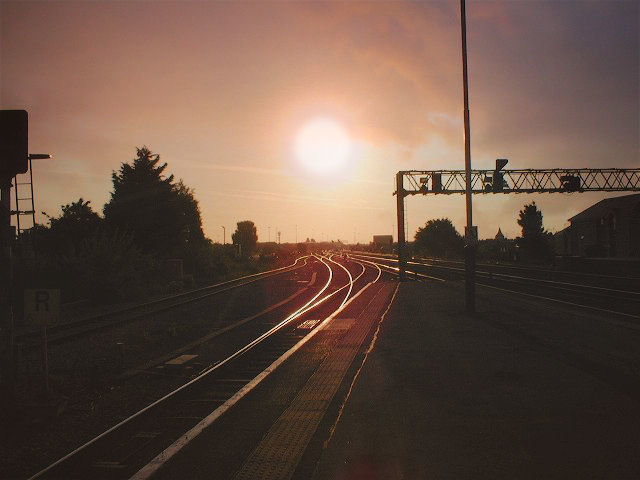In the last few weeks I've rediscovered a television series from the sixties. The Saint were the adventures of gentleman adventurer Simon Templar, played by Roger Moore, a sort of poor man's James Bond without the gadgets and evil villains taking over the world. Moore plays the part with his usual bond-esque humour but it is hard to imagine a real life counterpart so genteel and light hearted. In his world, just like Bond, he's infamous and known to everyone yet can wander around incognito until the he gets betrayed by a twist in the plot.
The thing is, like most sixties television in Britain, production values were very low scale. You can see that corridor is a painted backdrop. That car chase across Germany looks more like Essex. The train carriage is a simple sound stage set. Paris no more than a backdrop of Notre Dame. But you don't mind that, because again, like most sixties television, these programs tell stories. The adventures might be contrived, predictable, sometimes even completely implausible, but unlike modern series the episodes don't rely on emotional wrangling or deep significance. It's actually fun to watch, a guaranteed gritty fistfight in every episode, and the sixties cut scenes and cars add period flavour.
Of course, when Ian Ogilvy took over in the seventies, changing the charismatic Volvo P1800 sports car for a lumbering Jaguar XJS, the mood had changed. Gentleman adventurers were a thing of the past, aside from James Bond. American imports introduced us to the Ford Torino of Starsky & Hutch, Kojak and his lollipops, and in Britain, series like The Professionals had opted for a more down to earth and working class feel. The Seventies - when Britain joined Europe and the Old World finally withered away.
Hmmm... We've just decided to leave Europe. I wonder....
Pole To Port Stanley
The Douglas DC6 is a pleasing shape in the air, a fifties four engine propliner descending from that old warhorse, the Dakota. In the night sky a few miles south of the Falklands, the Pratt & Whitney Double Wasp engines, each capable of 2400 horsepower, droned on. Below us, hazy patches of sea mist lit by the moon. A few whisps of cumulus drifted by. Above, the stars, strangely static despite our two hundred mile an hour cruise. Most of the passengers would be dozing off by now, too tired by the white knuckle ride on takeofff and the subsequent journey across the South Atlantic to stay awake, too distracted by the vibrating rumble and the stale interior to sleep well. Finally, the radio messages became more frequent, and the command comes through to descend and head for the approach to Port Stanley.
In real life my hand would have spread across four chunky levers, but with a couple of keypresses, the angry noise reduces to a quiet grumble, and the plane starts to lose altitude. But of course this isn't real. Finally with some time to relax and forget the busy schedule of the past year, it was time to break out the flight simulator.
I'd been watching Pole To Pole, a travel documentary by Michael Palin, and fancied a go at flying down there. My first attempt was hopelessly inept. I ought to have known better, given my real life pilot training, but I took off without planning and quickly found the cold air causing engine failure after take off, made worse by the prospect of ending up in the icy waters of the polar seas. Not good.
Okay. Lets think about this. The gravel runway in the simulator at the end of a rocky archipelago was too short for the heavily laden DC6 so I prepared every trick I could think of, and took a lot longer to warm the engines, running them up to power much more gently. Without that two hundred foot cliff off the end of the runway all would have been another disaster, and the random weather I took off in was appalling. All that had been coped with. There was the runway lights at Port Stanley.
Realism? Well, Microsoft might claim its as good as it gets, but I certainly wasn't. Might have to practice a bit more before I get that phone call from a desperate airline.
Crisis Ot The Week
This star prize has to go to Brexit. it must have been obvious there was a chance the British public would choose to go, and everyone quickly forgot that until we kick off Article 50, nothing changes, and even then, there's still a two year negotiation period. Come on Simon Templar. Shoot the bad guys, kiss the girl, and put Britain back on course. At the moment you're a lot more real than some of our overpaid politicians.


1 Comment
Recommended Comments